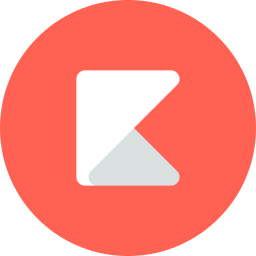
Kiddom
July 23, 2020

In a summer webinar, we discussed the merits of a truly digital curriculum. Below, we unpack some misconceptions about going digital in preparation for the webinar, which occurred on July 28, 2020. View the highlights of our discussion here.
In the world of pK-12 education, curriculum reigns supreme because it defines what and how young people should learn. No matter where learning takes place this fall, the importance of curriculum will not falter. But in light of the COVID-19 pandemic, quality curriculum that allows for remediation and enrichment is more important than ever. 95% of school administrators anticipate learning loss due to COVID-19 this fall. With new distance and hybrid learning models becoming prevalent, the way we create and interact with curriculum will have to change. Why should that mean reinventing the wheel?
In a curriculum survey conducted before the pandemic we found that many educators associate “digital curriculum” with “PDFs available online.” But PDFs are static, and disconnected from the key components of learning. The benefits of having a dynamic, engaging, digital curriculum merely begin with teachers saving time—but the perks don’t end there.
Recently, Kiddom and Open Up Resources hosted a webinar on how to bring curriculum to life for pK-12 students. In this webinar, we demonstrated how much you can do with curricula housed in a digital learning platform. As a supplement to the webinar, which you can catch below, we created this article to cover 4 common myths about digital curriculum—busted!
A lifelong learner, primarily through storytelling.
Accessing PDFs online is a step in the right direction—but true digital curriculum allows you to contextualize for your classroom. Without the ability to edit your PDFs to foster student growth and learning, your curriculum isn’t reaching its full potential to engage students.
In Kiddom, digital curriculum comes to life with the ability to edit it for success in the classroom. Students feel engaged and empowered by interactive materials that are crafted with their strengths in mind. Teachers and school leaders also gain key insight into how curriculum is performing, with real-time data on student performance.
Teachers can probably tell you—just because your curriculum is available online in a drive doesn’t mean that it is easy to keep track of. PDFs are familiar, but not ideal. What gives digital curriculum the edge over traditional curriculum is the ability to connect it to instruction and assessment.
Kiddom combines the intuitive, easy-to-use interface of a PDF with invaluable data on student performance. In our K-12 OER Content Library, it’s easy to search by subject, grade level, standard, or content provider. Compared to PDFs on a cloud drive, where you can search by arbitrary file name only, finding content on Kiddom to enrich or remediate students is a breeze.
No matter how you edit or share your curriculum, you’re still able to see views of how it was used and how it performed towards student mastery. When you drill down into student performance by standard, you can pinpoint exactly which units and lessons really resonated with students, and which could use more contextualization.
Because it’s tied to device access, many people think that adopting a digital curriculum is too expensive. In our survey, 1 in 4 superintendents cited budget concerns as a reason their schools had not moved to digital curriculum. The truth is, going digital is often cheaper than print, and much better for the environment. A 200-student school using roughly 6 pieces of paper per student each day will save $19,200 in printing costs, 240,000 pieces of paper, and 29 trees per year by going paperless for one school year.
In Kiddom, curricula can easily be updated, reducing the need to replace print materials. Educators gain flexibility and autonomy when they can make the changes necessary to maintain culturally relevant instruction. And, schools & districts save money when they don’t have to replace outdated textbooks for the entire community.
While it’s true that today’s students are digital natives, it takes more than being on a computer to engage them in learning. Online access alone is not what makes curriculum engaging; rather, it’s the flexibility and variety of instruction that comes with being able to edit and contextualize curricular materials for every unique student.
Digital curriculum should be crafted intentionally, with online learning at top of mind, so that it can tap into all of the potential of a digital learning experience. Students should be able to take ownership of their learning, with engaging and interactive materials. Open Up Resources Math 6-8 digital curriculum is packed with instructional supports that encourage every student to take their own path to mastery. Many units include a practical activity that provides real-world context, such as “Making and Measuring Boxes” or “Let’s Design a Tent.”
Much like traditional paper curriculum, it takes the expertise of an educator to make digital curriculum engaging for students. In a platform like Kiddom, teachers have the flexibility and autonomy to adapt curriculum for any classroom model. Teachers can also create personalized assignments with resources from our standards-aligned Content Library.
In this era of distance learning, schools and districts are hungry for a “digital-first” curricular experience. That exists in Kiddom, and it’s more flexible than a folder of static PDFs. With the ability to fully customize curriculum for each classroom, teachers can engage students in meaningful ways—in distance learning, in the classroom, or in a blended learning model.
These myths may have been standing in the way of your digital curriculum journey—but not anymore! Attend our webinar next week to discover what else is possible with a digital learning platform, and visit our website to learn more about how Kiddom is helping schools prepare for distance or blended learning models.